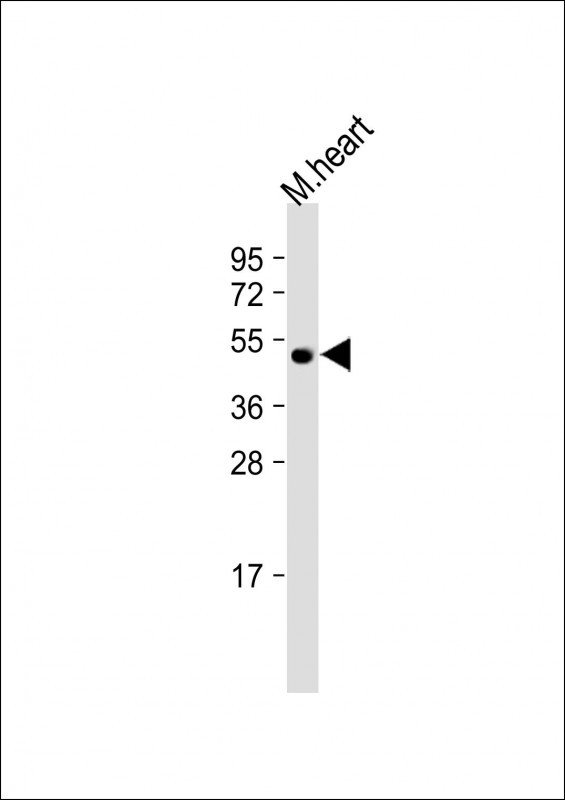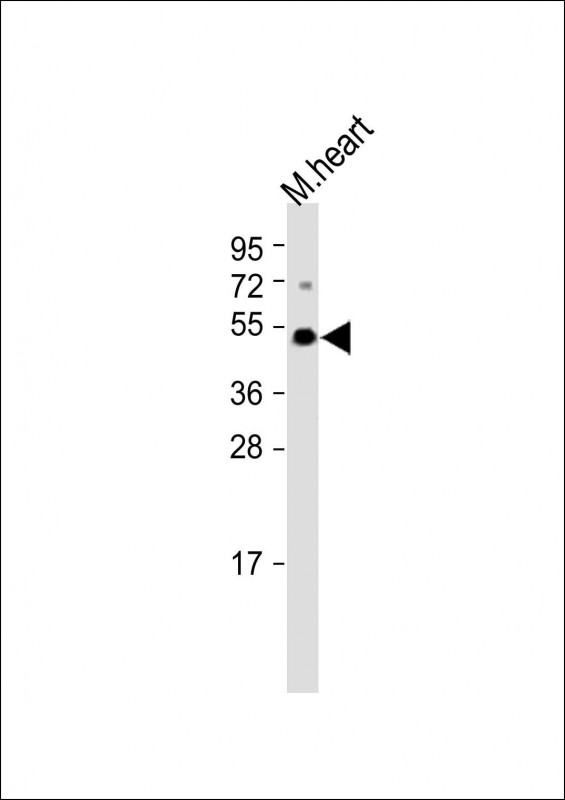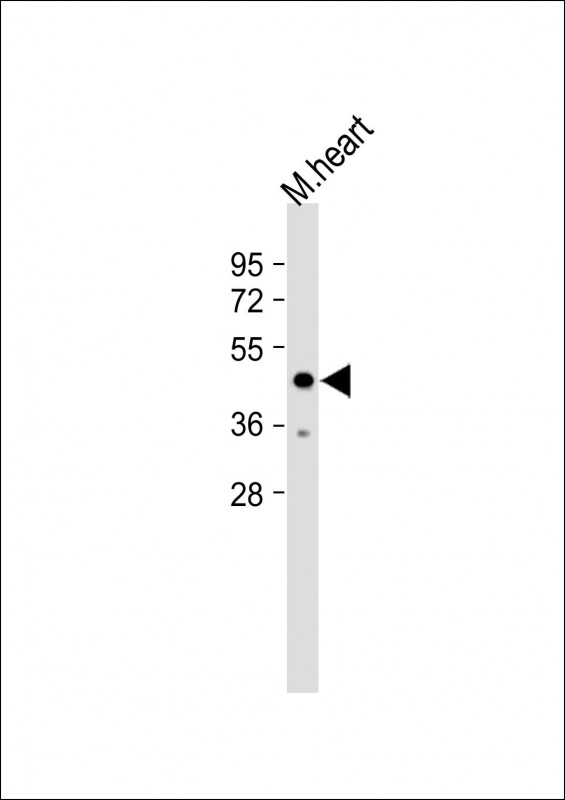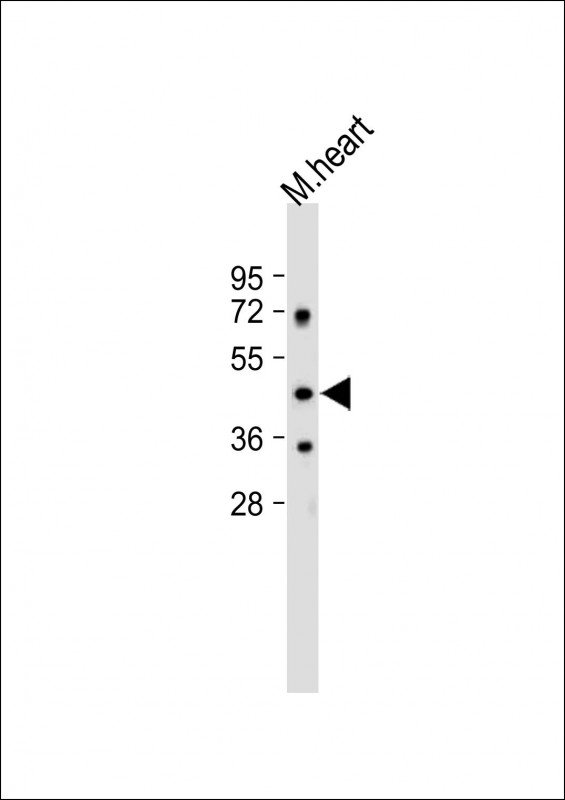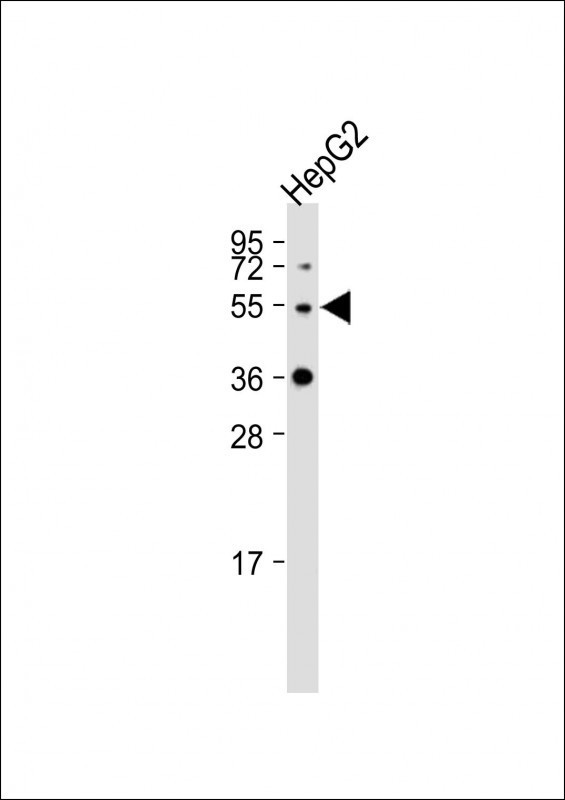PNPLA3 Antibody (N-term)
Affinity Purified Rabbit Polyclonal Antibody (Pab)
- SPECIFICATION
- CITATIONS
- PROTOCOLS
- BACKGROUND

Application
| WB, E |
|---|---|
| Primary Accession | Q9NST1 |
| Other Accession | NP_079501.2 |
| Reactivity | Human |
| Host | Rabbit |
| Clonality | Polyclonal |
| Isotype | Rabbit IgG |
| Calculated MW | 52865 Da |
| Antigen Region | 109-137 aa |
| Gene ID | 80339 |
|---|---|
| Other Names | Patatin-like phospholipase domain-containing protein 3, Acylglycerol O-acyltransferase, 231-, Adiponutrin, Calcium-independent phospholipase A2-epsilon, iPLA2-epsilon, PNPLA3, ADPN, C22orf20 |
| Target/Specificity | This PNPLA3 antibody is generated from rabbits immunized with a KLH conjugated synthetic peptide between 109-137 amino acids from the N-terminal region of human PNPLA3. |
| Dilution | WB~~1:1000 E~~Use at an assay dependent concentration. |
| Format | Purified polyclonal antibody supplied in PBS with 0.09% (W/V) sodium azide. This antibody is purified through a protein A column, followed by peptide affinity purification. |
| Storage | Maintain refrigerated at 2-8°C for up to 2 weeks. For long term storage store at -20°C in small aliquots to prevent freeze-thaw cycles. |
| Precautions | PNPLA3 Antibody (N-term) is for research use only and not for use in diagnostic or therapeutic procedures. |
| Name | PLPL3 |
|---|---|
| Function | Specifically catalyzes coenzyme A (CoA)-dependent acylation of 1-acyl-sn-glycerol 3-phosphate (2-lysophosphatidic acid/LPA) to generate phosphatidic acid (PA), an important metabolic intermediate and precursor for both triglycerides and glycerophospholipids. Does not esterify other lysophospholipids. Acyl donors are long chain (at least C16) fatty acyl-CoAs: arachidonoyl-CoA, linoleoyl-CoA, oleoyl-CoA and at a lesser extent palmitoyl-CoA (PubMed:22560221). Additionally possesses low triacylglycerol lipase and CoA-independent acylglycerol transacylase activities and thus may play a role in acyl-chain remodeling of triglycerides (PubMed:15364929, PubMed:20034933, PubMed:22560221). In vitro may express hydrolytic activity against glycerolipids triacylglycerol, diacylglycerol and monoacylglycerol, with a strong preference for oleic acid as the acyl moiety (PubMed:21878620). However, the triacylglycerol hydrolase activity is controversial and may be very low (PubMed:22560221). Possesses phospholipase A2 activity (PubMed:15364929). |
| Cellular Location | Membrane; Single-pass type II membrane protein. Lipid droplet |

Thousands of laboratories across the world have published research that depended on the performance of antibodies from Abcepta to advance their research. Check out links to articles that cite our products in major peer-reviewed journals, organized by research category.
info@abcepta.com, and receive a free "I Love Antibodies" mug.
Provided below are standard protocols that you may find useful for product applications.
Background
The protein encoded by this gene is a triacylglycerol lipase that mediates triacylglycerol hydrolysis in adipocytes. The encoded protein, which appears to be membrane bound, may be involved in the balance of energy usage/storage in adipocytes.
References
Santoro, N., et al. Hepatology 52(4):1281-1290(2010)
Valenti, L., et al. Hepatology 52(4):1274-1280(2010)
Rotman, Y., et al. Hepatology 52(3):894-903(2010)
Speliotes, E.K., et al. Hepatology 52(3):904-912(2010)
Pare, G., et al. PLoS Genet. 6 (6), E1000981 (2010) :
If you have used an Abcepta product and would like to share how it has performed, please click on the "Submit Review" button and provide the requested information. Our staff will examine and post your review and contact you if needed.
If you have any additional inquiries please email technical services at tech@abcepta.com.













 Foundational characteristics of cancer include proliferation, angiogenesis, migration, evasion of apoptosis, and cellular immortality. Find key markers for these cellular processes and antibodies to detect them.
Foundational characteristics of cancer include proliferation, angiogenesis, migration, evasion of apoptosis, and cellular immortality. Find key markers for these cellular processes and antibodies to detect them. The SUMOplot™ Analysis Program predicts and scores sumoylation sites in your protein. SUMOylation is a post-translational modification involved in various cellular processes, such as nuclear-cytosolic transport, transcriptional regulation, apoptosis, protein stability, response to stress, and progression through the cell cycle.
The SUMOplot™ Analysis Program predicts and scores sumoylation sites in your protein. SUMOylation is a post-translational modification involved in various cellular processes, such as nuclear-cytosolic transport, transcriptional regulation, apoptosis, protein stability, response to stress, and progression through the cell cycle. The Autophagy Receptor Motif Plotter predicts and scores autophagy receptor binding sites in your protein. Identifying proteins connected to this pathway is critical to understanding the role of autophagy in physiological as well as pathological processes such as development, differentiation, neurodegenerative diseases, stress, infection, and cancer.
The Autophagy Receptor Motif Plotter predicts and scores autophagy receptor binding sites in your protein. Identifying proteins connected to this pathway is critical to understanding the role of autophagy in physiological as well as pathological processes such as development, differentiation, neurodegenerative diseases, stress, infection, and cancer.
